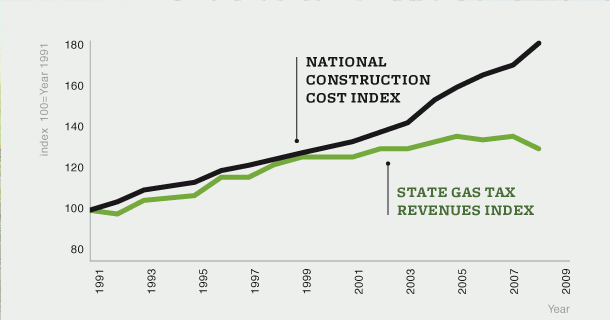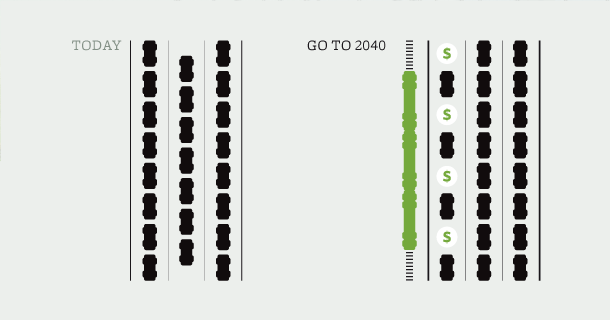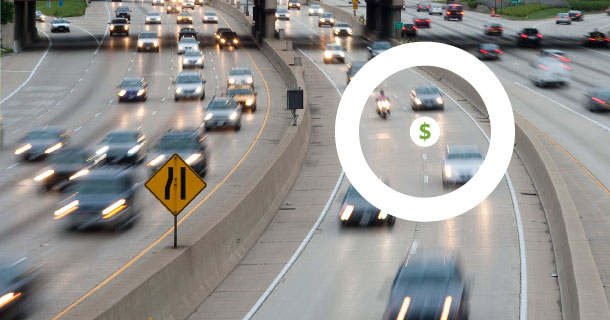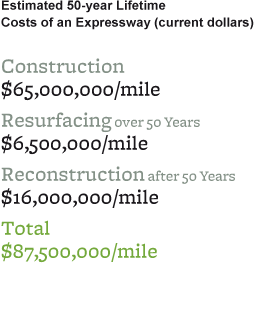While our advanced system of highways, trains, and buses retains an excellent national and global reputation, it is aging quickly and falling behind other industrialized parts of the world, many of which have invested significantly to create, operate, and maintain world-class systems.
Achieving a modern, well-functioning system of roads and public transit simply makes good economic sense. Businesses want efficient and effective transportation infrastructure, including rapid access to airports and efficient movement of goods. Attracting and retaining a skilled workforce requires a system where ease of mobility is ensured and where car ownership is not a requirement for living, working, and recreation.
Traffic congestion has real costs, including lost time and fuel, decreased productivity, inefficient movements of freight, and pollution. Underinvestment in transportation is also harmful, as seen with distressing cuts to public transit and a backlog of deferred maintenance on our roads and bridges.
Prioritizing Investments
To improve the efficiency and effectiveness of our transportation system, the first requirement is to spend existing resources more wisely. Investment decisions should be based on performance-driven criteria, rather than arbitrary formulas. The region should prioritize efforts to modernize our significant existing assets we have, rather than continuing to expand the system.
Investments of all types should take a multimodal approach, with consideration for transit users, bicyclists, and pedestrians. The federal government and State of Illinois should keep pace with global competition by increasing transportation investment in metropolitan regions like ours, which drive the U.S. and state economy.
Find New, Innovative Revenues
The second requirement is to generate new revenues through more-efficient user fees, which should be better structured to reflect actual maintenance and operations needs as well as the costs of congestion. The federal and state gas taxes, which fund a large share of our roads, have not kept up with the costs of construction. These should be bolstered in the short term, and a replacement revenue stream should be explored as automobiles become more fuel-efficient.
Also, applying free-market, supply-and-demand principles like congestion pricing and parking management strategies will reduce congestion by providing incentives for some drivers to alter their travel behavior. These strategies will enhance mobility for all users and will also help fund badly needed improvements to our transit systems and local roads. Other innovative financing sources, such as public- private partnerships (PPPs), also show promise in reducing costs and shortening the duration of project development and construction.



